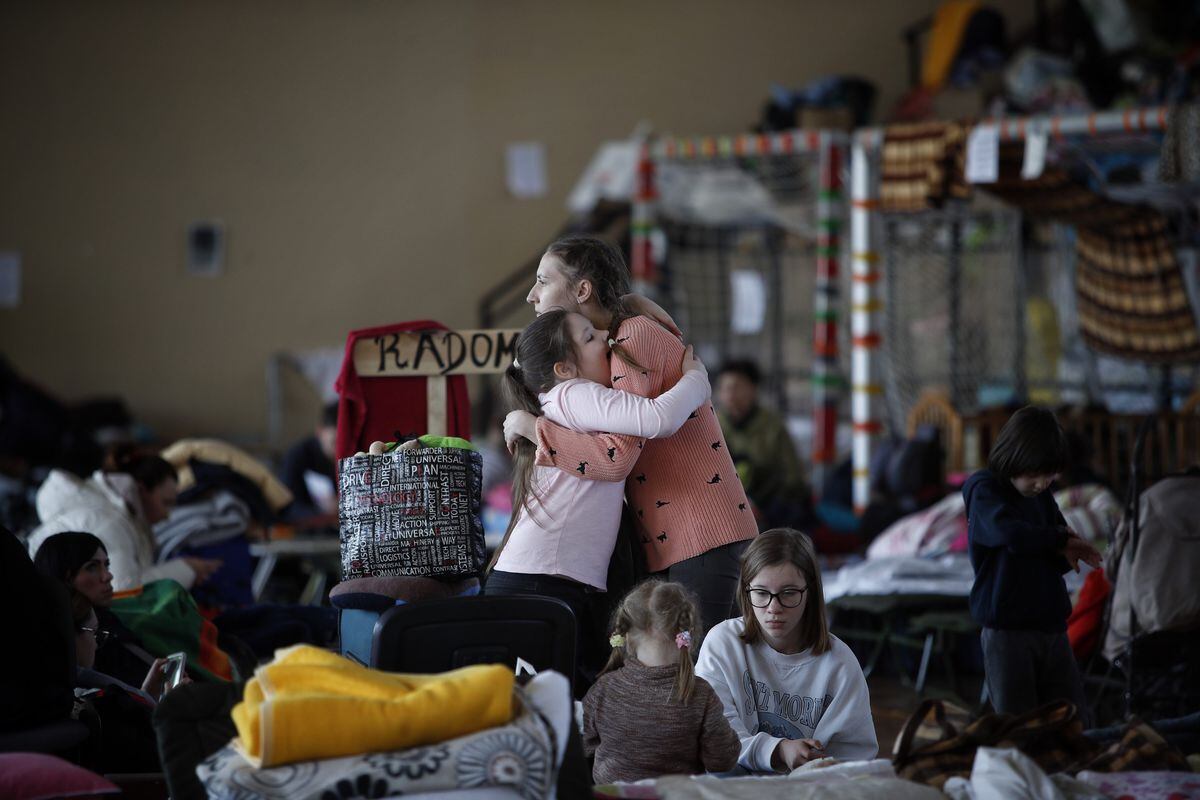The increase in investment for the reception of Ukrainian refugees and assistance to kyiv after the Russian invasion of February 24, 2022 has raised official development assistance (ODA) to all-time highs.
According to preliminary data published this Wednesday by the Organization for Cooperation and Development (OECD), the institution's official donors —30 countries plus the European Union, which make up the Development Assistance Committee (DAC)— spent last year 204,000 million dollars (186,700 million euros) to cooperation and development programs and humanitarian aid, 13.6% more than the previous year and the fourth consecutive year in which the figure reached a record —Spain increased the item by 26 ,1%-.
On the other side of the coin, the sub-Saharan Africa region received 8% less investment.
Specifically, the amount allocated to asylum those fleeing wars was in global figures of 29,300 million dollars, 14.4% of total ODA, compared to 12,800 million allocated in 2021 (the previous peak, in 2016 and in the middle of the migratory crisis in Europe, it was 20,000 million).
According to the UN, more than eight million people have fled Ukraine, in what has become the biggest refugee crisis since World War II.
"If assistance to a Somali refugee in Kenya is considered development aid, assistance to a refugee in France is too," as explained by the president of the CAD, Carsten Staur, during a press conference held simultaneously in Paris. and Washington, and broadcast
online.
Although always limited to a period of "12 months", it has qualified.
In the case of Spain, of the 4,207 million allocated to ODA in 2022, a total of 850 (20.2%) were dedicated to assisting refugees within its own borders, according to the OECD, which publishes official data on member countries.
It is, according to the institution, the main cause of the growth of the item that the Government of Pedro Sánchez allocated to foreign aid.
The Executive has consolidated this trend in the 2023 General Budgets, with an investment of just over 900 million euros to care for refugees in Spain.
The development aid sent from the DAC countries to Ukraine also experienced a significant increase, from 918 million dollars in 2021 to 16.1 billion in 2022 (17.5 times more), of which 1.8 billion were used in humanitarian aid.
However, the group of countries that the UN calls the least developed countries (LDCs), a total of 46 States —33 in Africa, 12 in Asia plus Haiti—, received 1% less bilateral development aid.
The fall has been especially pronounced in Africa, where development aid plummeted 7% in global terms and, more specifically, in sub-Saharan Africa, with a decrease of 8%.
And although they have not fallen, the programs destined specifically for global humanitarian aid have practically stagnated, with an increase of 1%, up to 22,300 million.
The increase in aid to Ukraine has not come at the cost of declining investment in less developed countries, according to the OECD, but is due to greater "efforts" by donors
Despite this, Staur has insisted that the increase in aid to Ukraine has not come at the cost of decreased investment in less developed countries, since the largest items for Ukraine have been due to greater "efforts" on the part of OECD donors.
"The trend in 2022 has been very positive," he added, since, without taking into account spending on refugees, development aid rose 4.6% last year compared to the previous period.
"Compared to 2019, the last year before the covid pandemic, aid to the least developed countries increased by 9% in 2022," stressed Pilar Garrido, director of Development Cooperation at the OECD.
However, Staur has called for maintaining the "commitment to support the least developed countries, many of which are in Africa", despite experiencing a situation with "growing pressures on scarce resources for development".
“There is much more work we need to do to achieve a more inclusive future,” said Mathias Cormann, OECD Secretary General.
Far from 0.7%
The investment allocated to official development assistance was equivalent in 2022 to 0.36% of the combined GDP of the OECD donor countries, an amount that is still far from the objective set by the UN that this investment reaches at least 0.7% .
Despite this, the proportion is the highest recorded in the last 40 years —in 2021 it was 0.33%—, according to the institution.
Only five DAC member countries exceeded or reached an investment in development aid equivalent to 0.7% of their GDP: Luxembourg (1%), Sweden (0.9%), Norway (0.86%) Germany (0. 83%) and Denmark (0.7%).
Other countries that are not members of the OECD Development Assistance Committee also exceeded 0.7%: Turkey (0.79%), which is an OECD member but not a DAC member, and Saudi Arabia (0.74% ), as explained by the institution on Wednesday.
A total of 26 countries, including Spain, increased the amount allocated to official development aid last year
In addition, 26 countries increased the amount allocated to official development assistance.
Spain was one of them, reaching 0.3% of GDP, a higher percentage than the previous year, but below the CAD average, far from the Government's commitment to reach 0.5% by the end of the legislature and even further from the 0.7% included in the new Cooperation Law.
Those who made the greatest efforts in percentage terms of increase were Poland (255.6%), the Czech Republic (167.1%), Ireland (125.1%) and Lithuania (121.6%).
In total figures, the United States remained the largest provider of official development assistance in 2022 (55.3 billion dollars), representing more than a quarter of the total, followed by Germany (35 billion), Japan (17.5 billion), France (15.9 billion) and the United Kingdom (17.7 billion).
The member countries of the G7 contributed a total of 75% of the ODA.
As for the 20 EU countries that belong to the Development Assistance Committee, they jointly contributed €91.6 billion, 18.6% more than in 2021, which represented 0.57% of their combined GDP. .
You can follow PLANETA FUTURO on
,
and
, and subscribe
here
to our 'newsletter'
.


/cloudfront-eu-central-1.images.arcpublishing.com/prisa/AA2WRBH3OZBHHPZW2JNGPQYYME.jpg)












